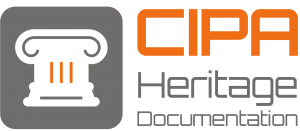By: Minna Silver
This spring, exactly after 10 years from the Arab Spring and now during and despite the pandemic, there has been a spectacular move of Egypt’s great pharaohs from the Old Egyptian Museum in Cairo to the modern Grand Egyptian Museum in the Golden Parade of the Pharaohs. The parade was broadcasted by Egypt’s Ministry of Tourism and indeed undoubtedly it will boost tourism to the new Grand Egyptian Museum which inauguration is expected to happen in June 2021.
One could now this spring follow the televised once in the lifetime procession of mummified pharaohs while a symphony orchestra and singers were playing and Egyptian dignitaries were attending the feast. Dimitri Tomkin had once composed Land of the Pharaohs and a special peace Pharaonic Procession which, for example, the Royal Philharmonic Orchestra had recorded. We could now from distance enjoy a real historical procession and have change into the world of lockdowns at our homes.
Such famous pharaohs as the female pharaoh Hatshepsut and pharaoh Ramesses II, proceeded in specially modified vehicles in the streets of Cairo while the orchestra was playing pompous music and the vehicles transported the pharaohs to the better equipped Grand Egyptina Museum in Giza. It is fine that the ancient Egyptian finds including mummies will get the best laboratory treatment in the museum. The mummy of Tutankhamen, perhaps to us the most famous pharaoh, has been returned to its tomb which from the archaeological ethic point of view is an appropriate gesture.
Soon after the spectacle, the world was hearing about extraordinary findings when Dr. Zahi Hawass’s announced the discovery of the lost city of “the Rise of Athen” or “the Dazzling Aten” in Western Thebes next and across the Nile from Luxor. The city dates from the time of Pharaoh Amenophis III (ca. 1390-1352 BC) and his son Amenophis IV (ca. 1353-1336 BC), the latter later known as Akhenaten. The city was apparently used by successive pharaohs Tutankhamen (ca. 1334-1325 BC) and Ay. Pharaoh Akhenaten had created a new monotheistic religion known Atenism which the name of the lost city refers to. He also built the city for Aten in Amarna situated between Cairo and Luxor. From the palaeopathological and DNA examinations, Akhenaten has been identified as having been the father to the boy king Tutankhamen’s.
Some archaeologists have reacted to the discovery of the city that it is the most significant archaeological find made in Egypt since the tomb of Tutankhamen in 1922. The city was discovered when Hawass was looking for the so-called mortuary temple of Tutankhamen. The unearthed finds now consist of buildings, pottery, tools, jewelry and tombs. It seems to have partly served as an industrial centre of pharaohs, but only parts are exposed and the future can bring more new information of the nature of the city. It is claimed that the discovered city is the largest ever known in ancient Egypt.
In this digital age, there are numerous new ways to save the sites and finds from deterioration. The replica of Tutankhamen’s tomb has been produced by FactumArte to people to visit and save the original tomb. The unwrapping linen shrouds and wrappings of mummies have developed digitally. Now there are algorithmic ways to virtually unwrap mummies without actually opening them. We can see inside the wrappings: jewelry and shabtis, little anthropomorphic and magic statues set under wrappings. The director of the Egyptian Museum in Turin introduced the new invention of digitally unwrapping mummies at the GEORES conference in Milan in the spring of 2019.ByB













